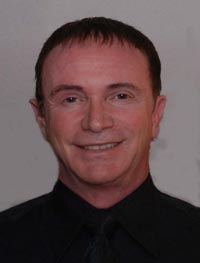
:dropcap_open:W:dropcap_close:hen doctors help high numbers of patients consistently for years with excellent results, other doctors want to know their secret. What is the one factor high-achieving doctors have in common? After three decades of interviewing the best, the one commonality I found in this group of ultra-high achievers is focus. I grilled a doctor about his huge following, asking, “How do you help so many people?”
He paused, and then replied, “One at a time.” He explained he worked on each patient at the exclusion of everything and everyone else around him, until he was done. Working this way was essential to his success.
I’ve watched leaders in our profession practice and received care from them, as well. The level of concentration they bring to their art has always impressed me. B.J. Palmer, in particular, had this quality. Old films from the 1920’s, showing him adjusting patients, reveal a man who was absolutely centered. One gets the feeling, if the entire world fell around him while working, he would have continued serving his patient.
Why Is Focus So Important?
Where is your mind when you adjust? The old timers called extreme focus, “being one with the bone.” Isn’t this the kind of care you would want?
Patients need focused care. They come to you after having little success with other doctors; they deserve your absolute attention. If you can put everything aside and lend your full attention to them, this may allow them to heal. This amount of caring can be profound and restorative, in and of itself.
In remembering the best adjustments I’ve received, the intense focus, the level of concern, and the precise delivery was life changing. Our patients will recall the same about us. A few moments of laser-beam focus can create a memorable event in patients’ lives. When patients are cared for this way, they will repeat their story, and chiropractic will keep growing. Isn’t this what you want for your practice?
Let Your Life’s Work Become a Work of Art
Something magical happens when we are totally involved in our work. It’s described as “being in the flow” and is one of the aims of the truly successful. Extraordinary people lose themselves in their work. Like great artists, they are in a meditative trance while working, yet they are fully present. The greats in every field love to experience this state: in a chaotic world, they enjoy moments of absolute clarity through focus.
How to Become More Focused
Often, growth in practice is counterintuitive. A close friend urged me to cut back my hours, saying that, if I did, my practice would grow. Although I was convinced he was lying, I finally reduced my hours after he continued to badger me. Suddenly, my practice grew. It grew so much, that I did it repeatedly. This worked because shorter hours demand more focus and higher energy. Allowing too much time to get things done decreases the quality of care by letting distractions into the workplace. If you must focus to get the job done, you get organized and do it.
Another counterintuitive way to develop focus is through rest. People who don’t relax can’t muster the intense focus necessary to build a great practice. These same doctors will protest about the high cost of having someone help them around the house and do it all themselves. By not resting adequately, they lose their clinical edge, and it costs them and their patients dearly. Intense focus demands a recovery period to recharge and perform at higher levels. B.J. Palmer often napped in the afternoon. During the rest of the day, he ran a college, sanitarium, cafeteria, two radio and one television station(s), wrote many books, and developed our great profession. Rest allowed him to be this productive. Are you well-rested? Discipline yourself to nap, meditate, take breaks, and play. Regenerate with regular vacations, seeing friends, and having fun.
Get Organized to Focus More on Patients
Rules for providing a quality service include:
1. Patients Always Come First
2. Doctor’s Time Is Primetime, and
3. Delegate Everything.
Patients Come First
In times past, patients expected to wait for a busy doctor and would tolerate a poorly-run clinic. Years ago, seeing a doctor required hours, but patients waited willingly because it was normal.
Today, this arrogant behavior is not well tolerated. Offices are usually better run, and the best offices provide the finest service. When a patient shows up, everything stops. The assistant hangs up the phone, or at least signals the patient, it won’t be long. The doctor drops his pen. All extraneous conversation stops and patients receive the attention they deserve.
In the best centers, doctors and staff anticipate every question and need patients may have. They are led through a seamless experience and receive appropriate care without much waiting. Ideally, the patient walks away thinking, “Wow, these people care about me. I can’t wait for my next visit.”
Doctor’s Time Is Primetime
Assistants in a busy office maximize a doctor’s time by minimizing interruptions. Experts in efficiency note that, every time someone is interrupted, the time to complete a task doubles. They also say that interruptions multiply the odds of errors dramatically.
In the best offices, phone calls, extraneous conversations, and other interruptions are tactfully limited, so that the doctor can offer his/her best. The staff dutifully runs interference for the doctor, so there are no distractions. Does your practice work this way?
Delegate Everything
Ideally, all work not requiring licensure to perform should be delegated. Assuming they can do everything better, delegating can be the hardest thing for doctors to do. Most doctors would rather do it all themselves than allow any aspect of care to suffer. When doctors won’t delegate, quality eventually suffers.
The greats throughout the centuries received support from qualified staff. Michelangelo and Leonardo had others stretch their canvas, mix their paints, and hand them brushes. They reserved their attention to the details only they were qualified to perform. Working this way, they contributed a vast body of work to the world.
Learn to hire well, train, and delegate. Give aspects of your work to people who can do it, and monitor their work. Manage so that you can focus on what you do best.
Conversation
No discussion of focus would be complete without covering what to say as we attend patients, and when to say it. This is often when we lose our focus.
There should be no conversation immediately before, during, and after the actual adjustment. Conversation should abruptly stop to allow absolute focus on this event.
Before and after the adjustment, the doctor should focus and talk about the patient’s needs, issues, and benefits of care; answer a question; explain his/her progress, results, how he/she adjusted, how he/she might feel; and give instructions and suggestions for self-care. As a rule, the focus of the conversation is on him/her. Is your “table talk” like this? If it gets off track, does it always come back to the patient?
Focus to Build Your Practice
The chiropractic champions have one thing in common: uncommon focus. They offer exceptional care and enjoy extraordinary results through this discipline. This is why patients flock to them. In the end, doctor and patient benefit. The patient enjoys wellness and the doctor his/her art. Do whatever it takes to center yourself on your patients needs. Retrain staff, rest more, and lead productive conversations. Lead your practice forward by managing your attention.

Dr. Steven Visentin, D.C., is a solo practitioner and clinic director for Care Chiropractic in Denver, CO. He authored an e-book entitled “Blow Your Head Off Practice Building Secrets” for the chiropractic profession.
As an accomplished public speaker, he is available for corporate events, training seminars, and other group functions as well as private consultations on a limited basis. For additional information, visit www.practicesecrets.com.








 Dr. Michael Failla is the President and Co-owner of Integrated Practice Solutions, the makers of ChiroTouch. Dr. Failla graduated from Life University College of Chiropractic in Atlanta, Georgia, and went on to run a highly successful chiropractic office in Seattle, Washington, for 25 years. Dr. Failla sold his practice in 2007 and continues to promote health and wellness by helping chiropractors run streamlined and successful practices with more time for their patients and less time with their paperwork.
Dr. Michael Failla is the President and Co-owner of Integrated Practice Solutions, the makers of ChiroTouch. Dr. Failla graduated from Life University College of Chiropractic in Atlanta, Georgia, and went on to run a highly successful chiropractic office in Seattle, Washington, for 25 years. Dr. Failla sold his practice in 2007 and continues to promote health and wellness by helping chiropractors run streamlined and successful practices with more time for their patients and less time with their paperwork.

 Dr. Steven J. Kraus is CEO of Future Health, Inc., a company that partners with chiropractors to deliver a comprehensive clinic management solution, including fully-integrated EHR. Dr. Kraus is a recognized expert in building successful clinics, having developed and sold 18 practices of his own and provided strategic consulting services to more than 400 healthcare businesses. He offers leadership to numerous industry associations and currently serves as the Chairman of the Iowa Board of Chiropractic. Contact Dr. Kraus at
Dr. Steven J. Kraus is CEO of Future Health, Inc., a company that partners with chiropractors to deliver a comprehensive clinic management solution, including fully-integrated EHR. Dr. Kraus is a recognized expert in building successful clinics, having developed and sold 18 practices of his own and provided strategic consulting services to more than 400 healthcare businesses. He offers leadership to numerous industry associations and currently serves as the Chairman of the Iowa Board of Chiropractic. Contact Dr. Kraus at